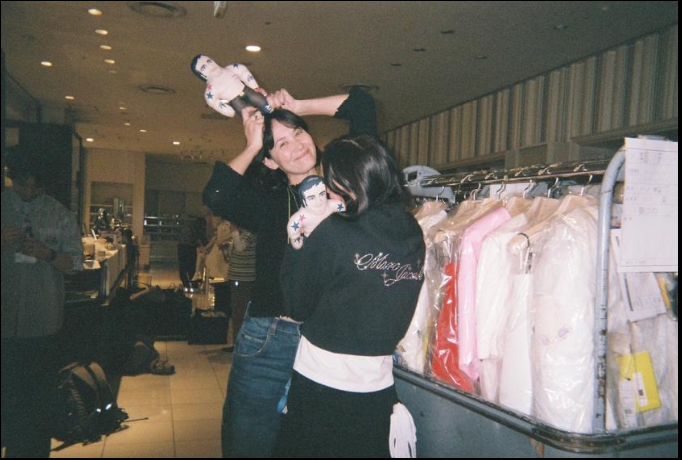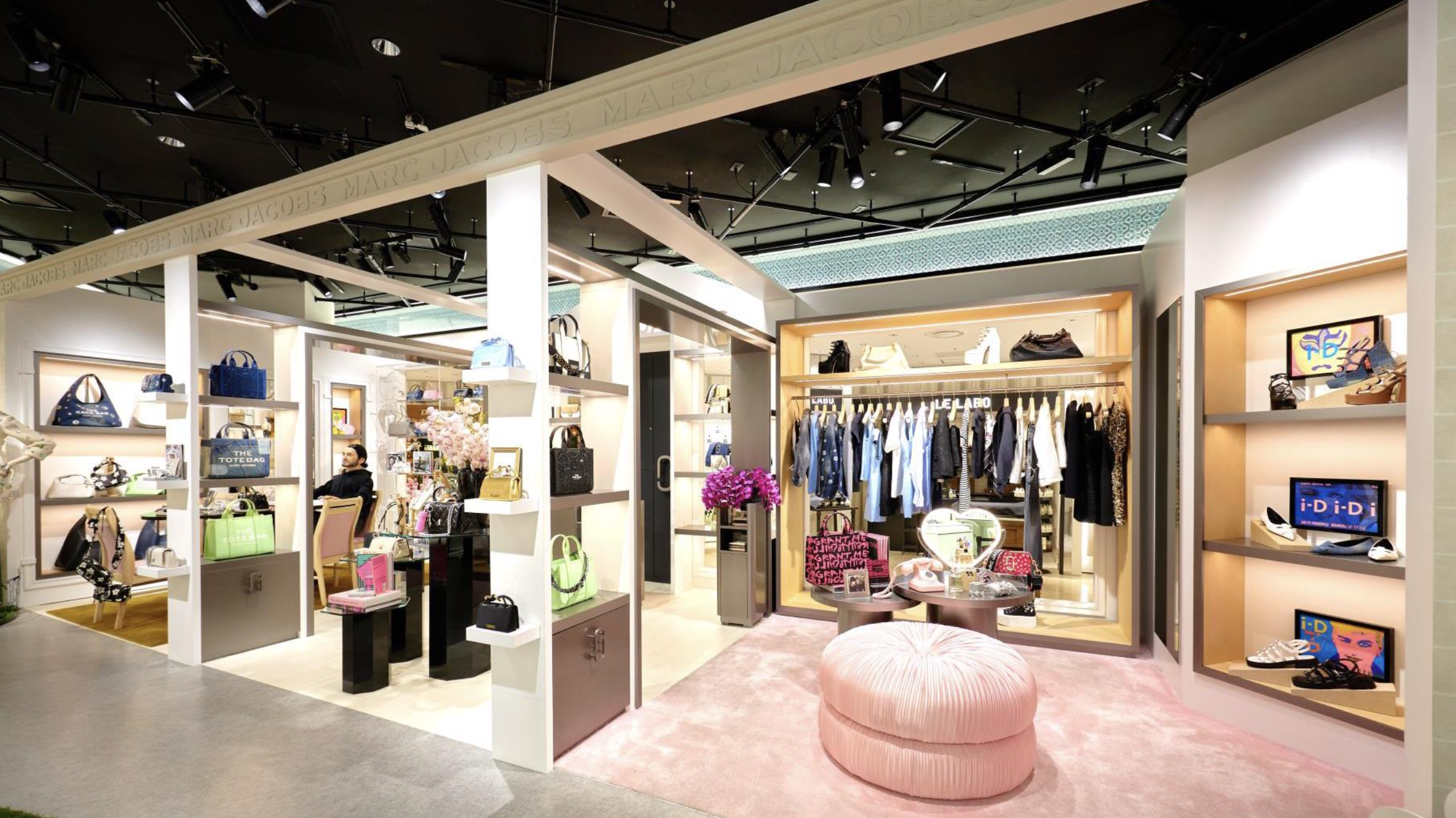Olivia De Jesus
Career: Visual Merchandising
Location: New York City
I’m excited to share my interview with Olivia De Jesus, Director of Global Visual Merchandising at Marc Jacobs (LVMH). Olivia attended the Gallatin School of Individualized Study at New York University, where she graduated with a Bachelor of Arts focusing on fashion as visual culture. She’s previously worked with American Apparel, Bottega Veneta, Coach, Diane von Furstenberg, and others. Below, you’ll find her advice for building a career in visual merchandising.
Tell us a little bit about Gallatin at NYU.
When I was looking at colleges, I knew I wanted a liberal arts degree. I knew I wanted to be in fashion, but I didn't know exactly what I wanted to be doing in fashion.
In the first few years in Gallatin, you get to take whatever classes you want. At the end of your second year, you start guiding your concentration a bit more with your counselor. I took so many classes: art theory, fashion theory, fashion history, literature, media studies, photography. I got to take a bunch of graduate classes, which was super fun. I think it’s the best program in New York, and I still talk with my Gallatin peeps and go back for alumni events.
How did you get your start working in visual merchandising?
I wanted to start interning and having jobs while I was in school so that getting a job at the end of it would be easier, which is exactly what I did, and it worked out quite well.
I started at American Apparel freshman year and started VM [visual merchandising] there. I knew that I couldn't be a sales associate all summer, 9-5, every day. I saw the people dressing the mannequins and all that stuff, and I was like, “I wanna do that.” So my first summer in New York, I got to be on the VM team and I was at the Houston American Apparel, which famously was the store with the mannequins with the pubic hair.
That's bold.
I mean, listen, we're all trying to be disruptive, right?
I interned at Bottega and Coach for a summer; I did continue Bottega through a school year. I did an internship with a startup. My experience was very well-rounded. I worked at American Apparel, which is on the lower end of the price bracket, and then I interned at Bottega, which is the higher end. I ran the gamut—all of the price ranges and all of the different facets of VM that you could be doing.
I didn’t know that visual merchandising was the career path for me until I got later into my internships. When I was at Coach, I was interning in the merchandising department and I realized that I really missed a tactical piece of it—the harmony between being at your computer and also being in stores and working with live products. Merchandising is working with products maybe 15% of the time, and then the rest you're on your computer. So I decided to go for a VM-specific internship, and that's when I ended up at Bottega. And then went to Marc after that.
I like that you allowed it to happen organically. I think a lot of students feel pressured to identify their career path so early on—even as early as high school.
It's so much pressure and people really do try to figure it out by 18, but your brain is still maturing and you're still learning so many different things. I don't think anyone can properly understand what they really, really want to do at 18 years old.
For people who want to work in visual merchandising but don’t have much experience, what do you recommend they do?
Start in stores. Every interview I've ever been on, it is a check mark that you worked in stores. Every single person from the very top to the very bottom will understand how important a retail background is, because you are interacting with the customer. You are at the point of sale and you speak with them every day.
Definitely for VM specifically, be curious. Most companies have a VM point person in store. It doesn't necessarily have to be the store manager; it can be a sales associate who has a passion for it and is very interested. When the VM team is in your store, ask questions, ask if you can help. That really shows so much, especially in the U.S. where a lot of sales associates don't wanna help you; they think that's not their job. So people who take initiative and ask questions, it really shines through.
How about people who have a few years of experience in visual merchandising and are looking to take their career to the next level. What advice do you have for them?
Don't ignore agencies. I started at Marc as an intern originally and then I started part-time freelance. I worked through a creative agency to get paid, but I didn't realize how much you can work with those creative agencies and they can place you on weekly, monthly, yearly projects, and can connect you with people.
What was the agency you worked with?
I worked with 24 Seven. There's also Pyramid and Creative Circle. I worked with a lot of graphic designers from there, too, to work on some guidelines and stuff like that. We're always looking for quick help right now with the state of the industry. We're outsourcing a lot because head count is very lean and we still have to get everything done.
What have you learned about the art of visual merchandising working at Marc Jacobs over the years?
I've learned how important brand image is. At Marc, we are irreverent. We always like to say it's nice and then you fuck it up a little bit, because nothing should ever be too cut and dry. So what's your unexpected element? What is something that would really, really ring true as being from Marc Jacobs?
We did a pop-up in February in Japan. It was at Isetan Stage 1, which is the biggest pop-up space in the whole world. Every brand comes with their new concept, their big message. We did a "House of Marc Jacobs." So it was three different rooms: there was an entry room, a dining room, and a wardrobe area. We had an animatronic Marc Jacobs who was sitting at the table clacking his fingernails. So it's stuff like that that we get to do. It was so rewarding at the end of it because Marc himself actually came to Japan for the pop-up and it was the first time he had been there in about 20 years. And the Japanese client loves him so much. Everyone was sobbing when they saw him. So it was really cool to see how the brand showed up in Japan.
What are some misconceptions about working in visual merchandising?
The common misconception is that it's just making things pretty, but there is such a business strategy that goes behind all of it and a lot of psychology, too. You're thinking about what the customer is seeing first, how they're shopping, how they're moving through a space. Also, you want to make sure that the product that we're pushing is what you see first. It's at eye level on all of the shelves or it's on the front table. We call ourselves the silent salespeople.
I created the three Ss of visual merchandising: strong, strategic, and shoppable. This is part of my core training. Strong: it's on brand and the styling is correct. Strategic: all of your business points are hit. Shoppable: it's easy for the customer to look at the assortment and see what they're looking at. I think that those three Ss are what you could be striving for.
Do you think you need to live in a fashion city, like NYC or Paris, in order to build a career in visual merchandising?
I spent a year studying abroad, half in London and half in Paris, so I'm gonna say yes for the most part. I think that if you want more of a corporate area and you want executive exposure and all of that good stuff, you have to be in the hubs. But the beauty of visual merchandising is that you can be a regional visual merchandiser and live wherever you wanna live, and you're traveling to your different stores. Do you wanna be more on the creation piece of it at the front end in the showroom? That's corporate. If you wanna be executing and working with in-store teams, that's the field. That's kind of the litmus test I was able to have because I kept questioning what was right for me.
Olivia, thank you for sitting down with Careers in Fashion and sharing your experience with everyone!
All photos courtesy of Olivia De Jesus.




